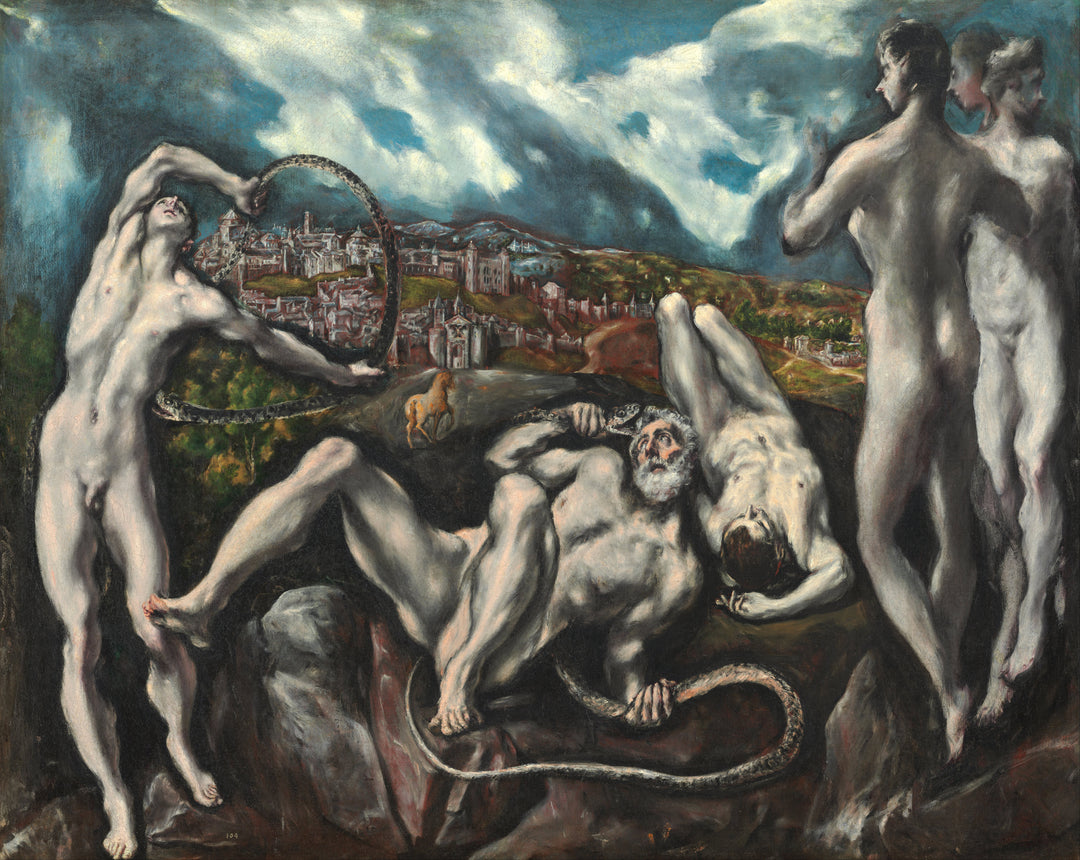
Laocoön - El Greco
| Author: | El Greco |
|---|---|
| Title: | Laocoön |
| Original location: | National Gallery of Art, Washington, USA |
| Year: | 1610-1614 |
The painting Laocoön, created by Doménikos Theotokópoulos, known as El Greco, between 1610 and 1614, depicts the tragic scene from Greek mythology in which the Trojan priest Laocoön and his sons are attacked by sea serpents sent by the gods as punishment for warning the Trojans about the deception of the wooden horse. With his characteristic use of elongated figures and intense colors, the painter manages to convey the torment and despair of the characters, establishing an atmosphere of drama and expressiveness that challenges the classical rigidity of Renaissance composition.
El Greco is a central figure of Mannerism, an artistic movement that developed as a response to the harmony and balance of the Renaissance, characterized by distorted perspective, anatomical exaggeration, and chromatic intensity. His work, particularly Laocoön, breaks with the classical conventions of proportion and serenity by presenting stylized and twisted bodies that evoke an almost metaphysical suffering, suggesting a spiritual dimension that transcends the mythological narrative.
The work also relates to classical tradition, as it is inspired by the famous sculptural group Laocoön and His Sons, a Hellenistic sculpture rediscovered in 1506 and highly admired by Renaissance artists. However, while the classical sculpture is characterized by its balance and anatomical attention, El Greco reinterprets the theme through a personal and subjective vision, closer to his spiritual and expressionist style. The use of cool colors and stormy skies in Laocoön contributes to a sense of instability and anguish, which in some ways anticipates the artistic trends of the Baroque, where drama and movement would become predominant elements. Artists such as Velázquez and Rembrandt would later adopt compositional elements and use of color similar to El Greco, though with a more naturalistic technique.
Although Mannerism was a transitional movement between the Renaissance and the Baroque, El Greco's work influenced later artistic movements such as Expressionism and Cubism. In the twentieth century, painters like Pablo Picasso and German Expressionists such as Egon Schiele found inspiration in his formal distortions and use of color for their own pictorial explorations. In the background of the painting, El Greco replaces Troy with Toledo, suggesting a connection between mythology and the reality of his own time.